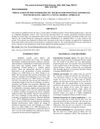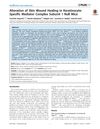Search
for
Did you mean epithelial healing?
Learn
5 / 6 resultslearn Beta Polypeptide
learn Osteopontin
signaling protein that, when suppressed, may grow hair by reducing inflammation and stem cell loss
learn Overview
learn Stem Cell Factor
Research
5 / 1000+ results
research Activin B Promotes Epithelial Wound Healing In Vivo Through RhoA-JNK Signaling Pathway
Activin B helps heal skin wounds and grow hair by activating a specific cell signaling pathway.

research Implication of Phytotherapeutic Sources for Potential Epithelial Wound Healing Ability: A Novel Herbal Approach
Aloe Vera helps wounds heal faster and promotes hair growth.
research Pigment Epithelium-Derived Factor Short Peptides Facilitate Full-Thickness Cutaneous Wound Healing by Promoting Epithelial Basal Cell and Hair Follicle Stem Cell Proliferation
Shortened PEDF peptides speed up skin wound healing by boosting cell growth.

research Alteration of Skin Wound Healing in Keratinocyte-Specific Mediator Complex Subunit 1 Null Mice
MED1 affects skin wound healing differently in young and old mice.

research Jagged-1+ Skin Tregs Modulate the Innate Immune Response to Wound Healing
Jagged-1 in skin Tregs is crucial for timely wound healing by recruiting specific immune cells.
Community Join
5 / 32 results
community Compressed part of research of theory of androgenic/anabolitic balance. AGA h-responders analytic. Theory of physio-metabolitic method of anti AGA treatment
The treatment for androgenetic alopecia involves using finasteride and minoxidil with intense exercise and cold exposure to boost metabolism and reduce androgenic effects, potentially leading to hair regrowth. This approach may activate biological pathways for improved hair and overall health.

community If You Have DUPA, PLEASE READ THIS: Everyone Should Be Scalp Biopsied
Scalp biopsies are crucial for diagnosing hair loss conditions like Diffuse Unpatterned Alopecia (DUPA) and retrograde hair loss, as treatments like finasteride and dutasteride may not be effective if other conditions are present. Combining PPAR-GAMMA agonists with retinoids could improve treatments for conditions like Lichen Planopilaris.
community TWIST-1 and the cure: Is it really that easy?
TWIST-1 gene's role in hair loss and potential as a treatment target. Inhibiting TWIST-1 may prolong hair growth and reduce hair follicle sensitivity to DHT.
community Is it possible for androgenic alopecia to begin at early adolescent years?
Hair loss can begin in early adolescence and cause mental anguish. Treatments mentioned include eating cruciferous vegetables, engaging in physical activity, and maintaining scalp hygiene.
community Dr Huberman - Cafeine when rubbed on the scalp can be as effective at times as minoxidil because it triggers 1GF-1
Whether topical caffeine can be as effective for hair growth as minoxidil and finasteride, with various replies discussing the efficacy of these treatments and criticism of Dr. Huberman's research methods.